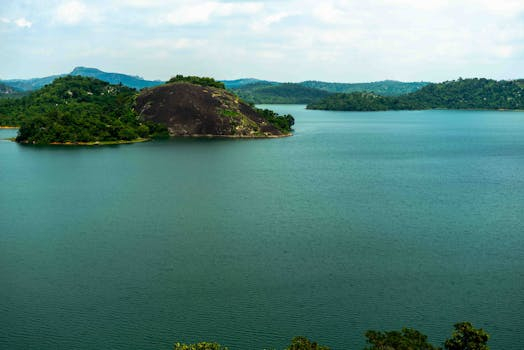Regenerative Travel: Healing Ecosystems Through Tourism
With the growing popularity of eco-tourism and sustainable travel, a new form of responsible tourism called regenerative travel has emerged. This innovative approach to travel not only focuses on minimizing negative impacts on the environment but also aims to heal and restore the ecosystems that have been damaged by traditional tourism practices. Regenerative travel goes beyond just leaving a small carbon footprint, it actively works towards revitalizing the natural environment and promoting a positive impact on the local communities. In this article, we will delve into the concept of regenerative travel and how it can help in healing ecosystems through tourism.
Understanding Regenerative Travel
Before we dive into the details, it is important to understand what exactly regenerative travel entails. Regenerative travel is a holistic approach to tourism that not only focuses on minimizing environmental harm but also on actively restoring and regenerating the ecosystems. It involves creating a symbiotic relationship between travelers and the environments they visit, where visitors contribute towards the preservation and restoration of the natural landscape.
This type of travel is centered around the concept of ‘give and take’. In traditional tourism, travelers often take more than they give – from resources to experiences. However, in regenerative travel, the goal is to give back more than what is taken, thereby leaving the environment in a better condition than it was found. This can include activities such as tree planting, beach cleanups, or even supporting sustainable development projects in the local communities.
The Role of Tourism in Ecosystem Degradation
Tourism has always been perceived as a major contributor to environmental degradation. From pollution to overconsumption of resources, the negative impact of tourism on the environment cannot be ignored. Some popular tourist destinations have suffered irreversible damage due to the increasing number of visitors every year. This not only affects the natural beauty of the place but also has a significant impact on the local flora and fauna.
For instance, unsustainable practices such as overfishing and deforestation to make space for hotels and resorts have led to the destruction of marine and forest ecosystems. The increase in air travel and transportation also contributes significantly to carbon emissions and air pollution, which further harm the environment and affect ecosystems.
The Benefits of Regenerative Travel
Regenerative travel offers a more sustainable and conscious alternative to traditional tourism, and it can have several positive impacts on the environment. By actively involving travelers in conservation efforts, regenerative travel can help in restoring and healing ecosystems that have been damaged by tourism activities. It also helps in creating awareness and educating visitors about the importance of preserving the environment.
Moreover, this type of travel can also have a positive impact on the local communities. It promotes responsible and fair tourism practices, ensuring that the economic benefits are shared with the local people. This creates a sense of ownership and responsibility among the communities, encouraging them to participate in conservation efforts and protect their natural resources for future generations.
Examples of Regenerative Travel Practices
There are several ways in which travelers can actively participate in regenerative travel practices and contribute towards healing ecosystems through tourism. Some of these include:
1. Volunteering with Conservation Organizations
Many conservation organizations in popular tourist destinations offer volunteering opportunities, where travelers can get involved in activities such as wildlife monitoring, habitat restoration, and environmental education. This not only directly helps in the preservation of the environment but also allows visitors to learn more about local ecosystems and the threats they face.
2. Supporting Sustainable Accommodation
Choosing to stay in environmentally friendly and sustainable accommodations, such as eco-lodges or green hotels, can also make a significant difference. These accommodations employ sustainable practices and promote responsible tourism, reducing their negative impact on the environment. Some properties also actively participate in conservation efforts and contribute towards the local communities.
3. Participating in Community-based Tourism
Community-based tourism is a great way to interact with the local people, learn about their culture, and support their livelihoods. Many of these initiatives are run by communities living in or near fragile ecosystems, and the economic benefits go back to preserving these environments. By choosing community-based tourism activities, travelers can directly contribute towards ecosystem restoration and conservation.
Conclusion
In conclusion, regenerative travel is a promising approach that has the potential to create a positive impact on both the environment and the local communities. By promoting sustainable practices, creating awareness, and actively involving travelers in conservation efforts, it can help in healing ecosystems that have been damaged by tourism activities. As responsible travelers, it is our responsibility to support and participate in regenerative travel, making a positive difference in the world, one trip at a time.







